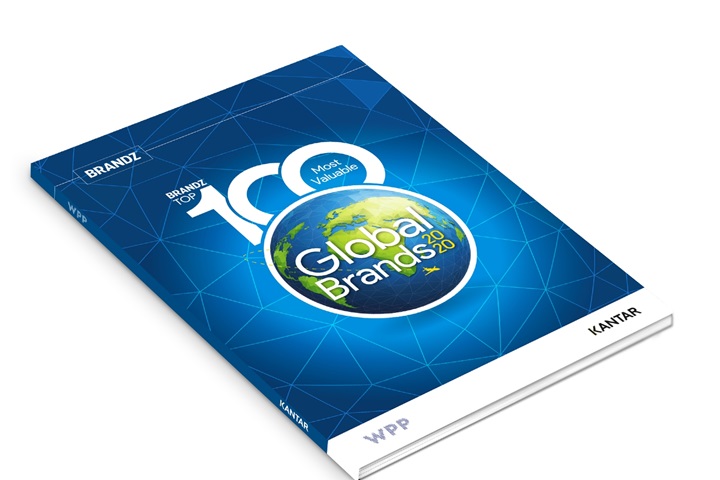Purpose is one of the most misunderstood and misused business buzzwords today. It’s not a new concept – centuries ago it was understood that all successful businesses had a responsibility to society – but it’s rapidly evolving in the age of coronavirus and #BLM.
Over the last decade, consumers have become more aware of what businesses take out of the system, how this impacts society and the environment with the result that the definition of purpose as perceived by consumers is changing.
We are now entering a time when consumers expect to be told what a brand is contributing to society as a whole. J Walker Smith from Kantar’s Consulting Division describes this as the Era of Public, an evolution from the era of person which gave brands more to do and deliver for customers. In this new era, while brands have never mattered more to the business that rely on them to provide price elasticity and long-term profits, they will only do so if the business can also demonstrate good behaviour.
Purpose matters because it has a powerful impact. An analysis of BrandZ data looking at brand value growth in the 12 years from 2006 to 2018 shows that brands with a strong brand purpose grew their value by 175%, more than double that of brands with a weaker purposeful positioning.
The outcome of a strong purpose and reputation is consumer trust, the instinctive belief that the brand is ‘right’ for me. Companies with purpose at their very core are those which make life better for people: through a better product or a higher ideal. And that drives growth for the brand and business.
Communicating purpose
There is a framework for communicating purpose smartly. In late 2019, Kantar and the ARF published Cracking Purpose, an analysis of 45 diverse purpose campaigns, including some that were less successful or had a negative outcome for the brand involved.
It identified three key elements to a powerful purpose campaign; You, Them and The World. You defines the nature of the brand’s purpose, which has to be authentic. Brands with a history of working for a cause have a right-to-play when activating a purpose-driven campaign that connects to it, for example.
Purpose should connect to the brand’s core proposition, enabling ownership and every campaign should in retrospect feel like an obvious move, i.e. it should immediately make complete sense for your brand to launch this campaign.
The second principle, Them, is the need to put people not the brand at the heart of the campaign. It should solve a problem that affects people and then let them tell their story.
MGM, for example, recognised that mainstream entertainment often excludes LGBTQ+ people, and so created an album that switched up the genders of artists performing classic love songs, making the songs applicable to same sex relationships. The campaign also gave its audience something to do, creating karaoke sessions where people could choose the pronouns they wanted to be used in the songs they sang.
The final element identified by Kantar and the ARF was the need to make the make the world a better place: drive social change by solving problems, tapping into culture and committing to long-term impact.
Outdoor brand Patagonia for example has brought a lawsuit against the Trump administration for its actions on public land. It worked with the native peoples of Bears Ears, which it helped become a national monument under President Obama. When President Trump sought to remove this protection, the company declared, “The President Stole Your Land,” tapping into Americans’ rising resentment of their government, especially around environmental issues.
This level of brand purpose could also be called brand activism. For a brand rooted in a clear purpose, and which delivers on its promise at every step, this is much more than a positioning: it’s a communications platform and media multiplier, and helps all aspects of marketing by bringing the consumer into the company. Tony’s Chocolate in the Netherlands went from a tiny crusader against cocoa slavery to a category leader, displacing established confectionery giants. Activism can be powerful when true to the brand, and not a tacked-on afterthought about Black Lives Matter, ocean plastics or any other issue that comes to the fore.
A receptive audience
A key factor driving brands to pay greater attention to purpose is the fact that more people care about how responsible brands are – to their employees, suppliers, the environment and society as a whole, In fact being responsible is nearly half (49%) of the contribution to corporate reputation compared to being successful (11%) fair pricing (8%) and leading the way (32%). Being responsible to the environment is now the number one factor in corporate reputation and has grown threefold over the last decade.
As environmental and social activism has achieved greater prominence in the last few years so too has the availability of information about company behaviour. Social media also makes it far easier to share complaints and drive issues into the mainstream. Not only do people care more it’s easier for them to spot irresponsible behaviour.
In 2006, PepsiCo CEO Indra Nooyi introduced the Performance with Purpose (PwP) concept to ensure PepsiCo’s contribution to society was rooted in its core business model. The aim was to shift PepsiCo’s social responsibility away from corporate philanthropy and toward a deep sense of purpose that would also drive shareholder value.
Nooyi points to the financial success of PepsiCo under her tenure as proof of the power of PwP and BrandZ’s scores on Brand Purpose across 15 different beverage, nutrition and snack brands have risen from a relative weakness to now match global benchmarks. More broadly, analysis of more than 5,000 brand cases in the BrandZ global database revealed a very strong overall correlation between Brand Purpose and overall Brand Power, the simplest summary of brand equity. The correlation is particularly high for categories such as healthcare, education and technology.
The desire to see purpose consistently used across the business touches issues such as the current Facebook boycott. Consumers demand that brands live their purpose in all aspects and for some brands, boycotting Facebook is exactly the right thing to do. Unilever, which has progressively developed several key brands like Dove, Persil and Ben & Jerry’s around purpose, is one example. Patagonia, which has set high standards with regards to the environment, its supply chain and working conditions, is another.
Four types of purposeful brands
Analysis of consumer perceptions around purpose and corporate reputation highlight that there are four types of brand:
- Big Ideal brands such as Ikea, Toyota and Amazon score well on both purpose and reputation and thus can be said to be truly purpose driven.
- Good Citizens score well for corporate reputation but are not perceived to have a strong purpose. Examples include luxury brands like Rolex and Prada, and Enterprise car rental.
- Little Helpers score high on purpose but less well on reputation and are seen to act more on an individual level. Brands like Wikipedia and E45 are strong on delivering benefits aligned to their core purpose but consumers aren’t generally familiar with their ‘corporate’ background.
The remaining brands do not score highly on either dimension – for these, purpose represents an opportunity to define themselves through values that their potential consumers will appreciate.
Evolving purpose
BrandZ first added a measure of Purpose in 2014 because of the shift observable across many brands towards a focus on wider benefits. Since then its impact has only grown.
A brand that wants to evolve its purpose in the eyes of consumers needs to identify the level of purpose that would fit with their brand and then commit to delivering against this on all levels – from product formula and deliver to brand communication. Such communication matters, not least because WARC’s Effective Use of Brand Purpose Report shows that Purpose campaigns often operate with lower budgets.
As brands start to promote their actions, every business decision must be made with a long-term view in mind. Each must be backed up by the way a brand consistently talks about itself and is intrinsically linked to its brand purpose.
In particular, brands shouldn’t expect much of an impact from their first action alone. Consumers will judged them on the coherency of the behaviours and actions they have taken over the long-term in support of their, newly, publicised purpose.
The role of purpose and responsibility has been changing for the last decade. Brand perceptions are hard to build and slow to change, but in 2020 all brands have been challenged on their social contributions, by both #BLM and coronavirus. Many have tried to respond with messages of support and understanding. Consumers, however, look beyond what’s being said and match the slogan with the long-term commitment and action that sits behind it. No brand can solve all the world’s challenges but the precious commodity of trust is built by addressing and applying a purpose consistently, honestly, and inclusively.



